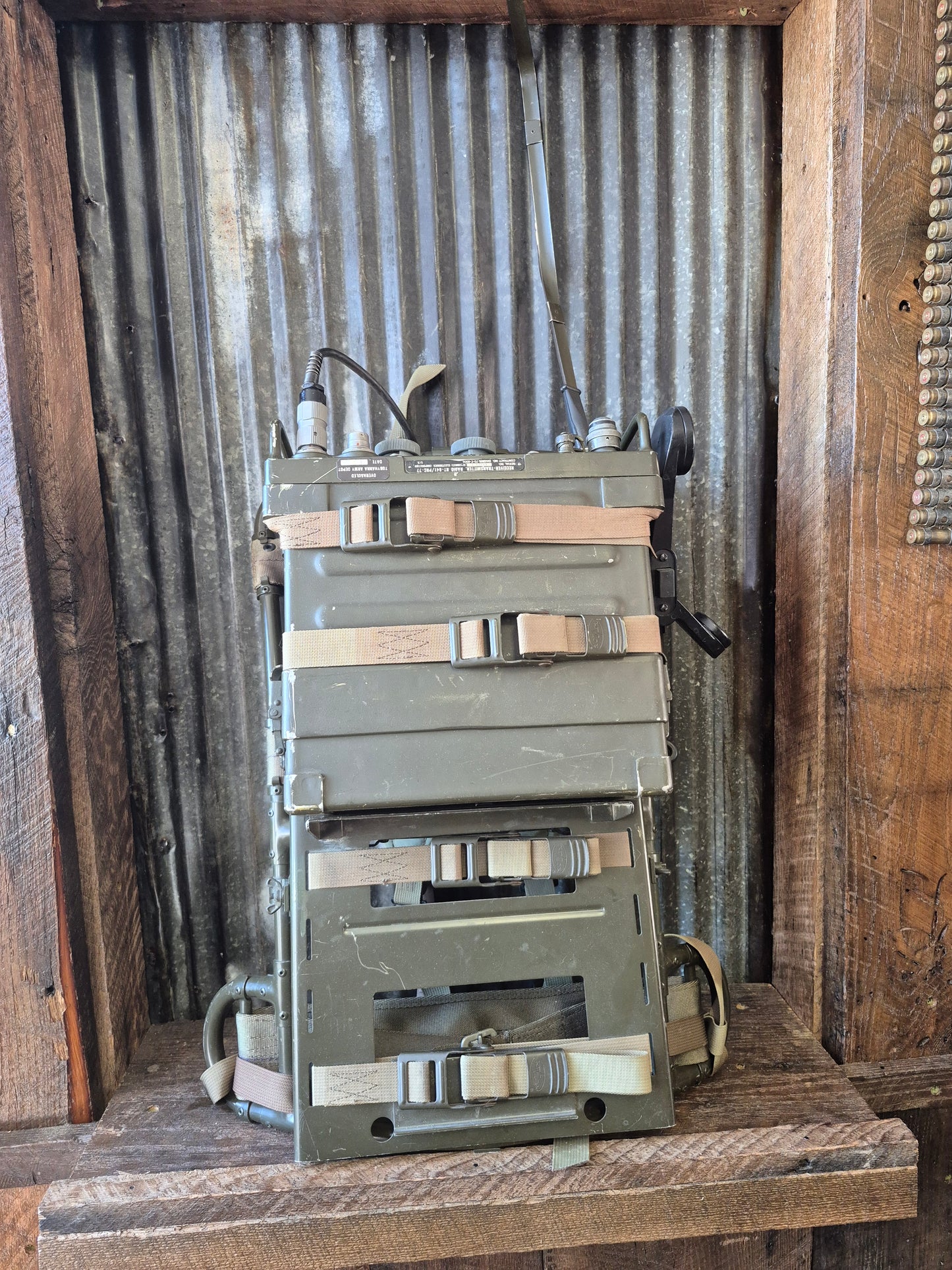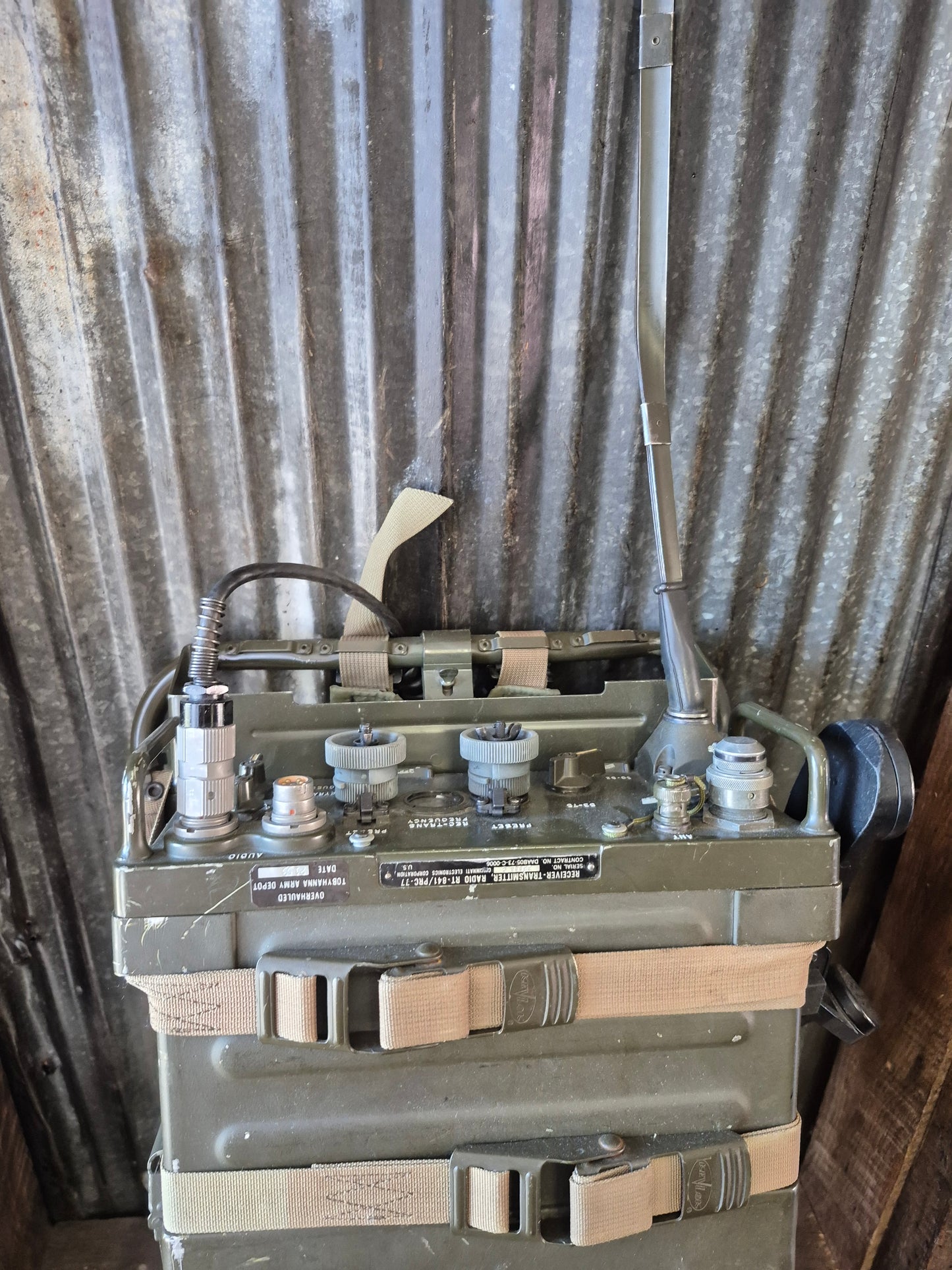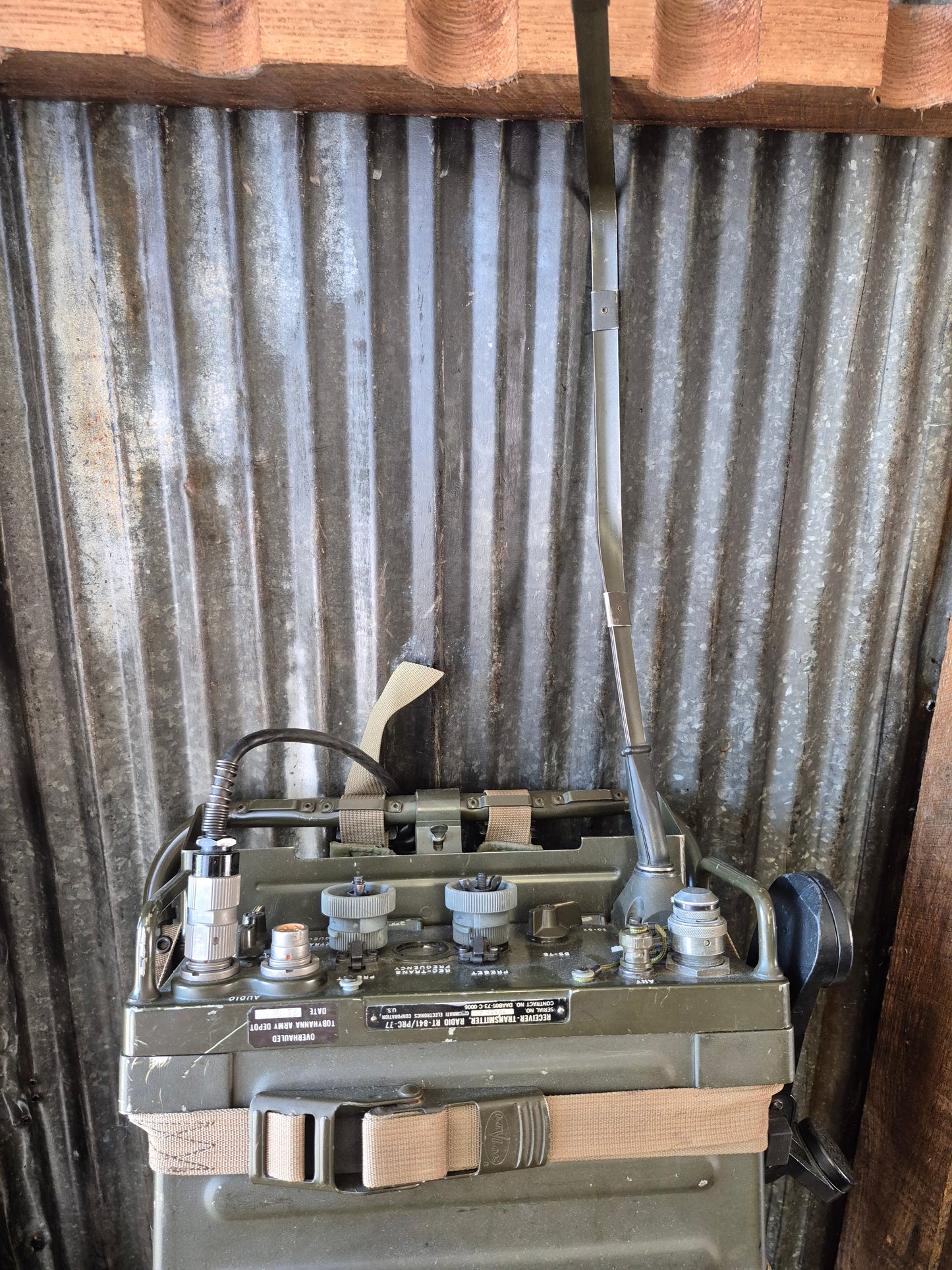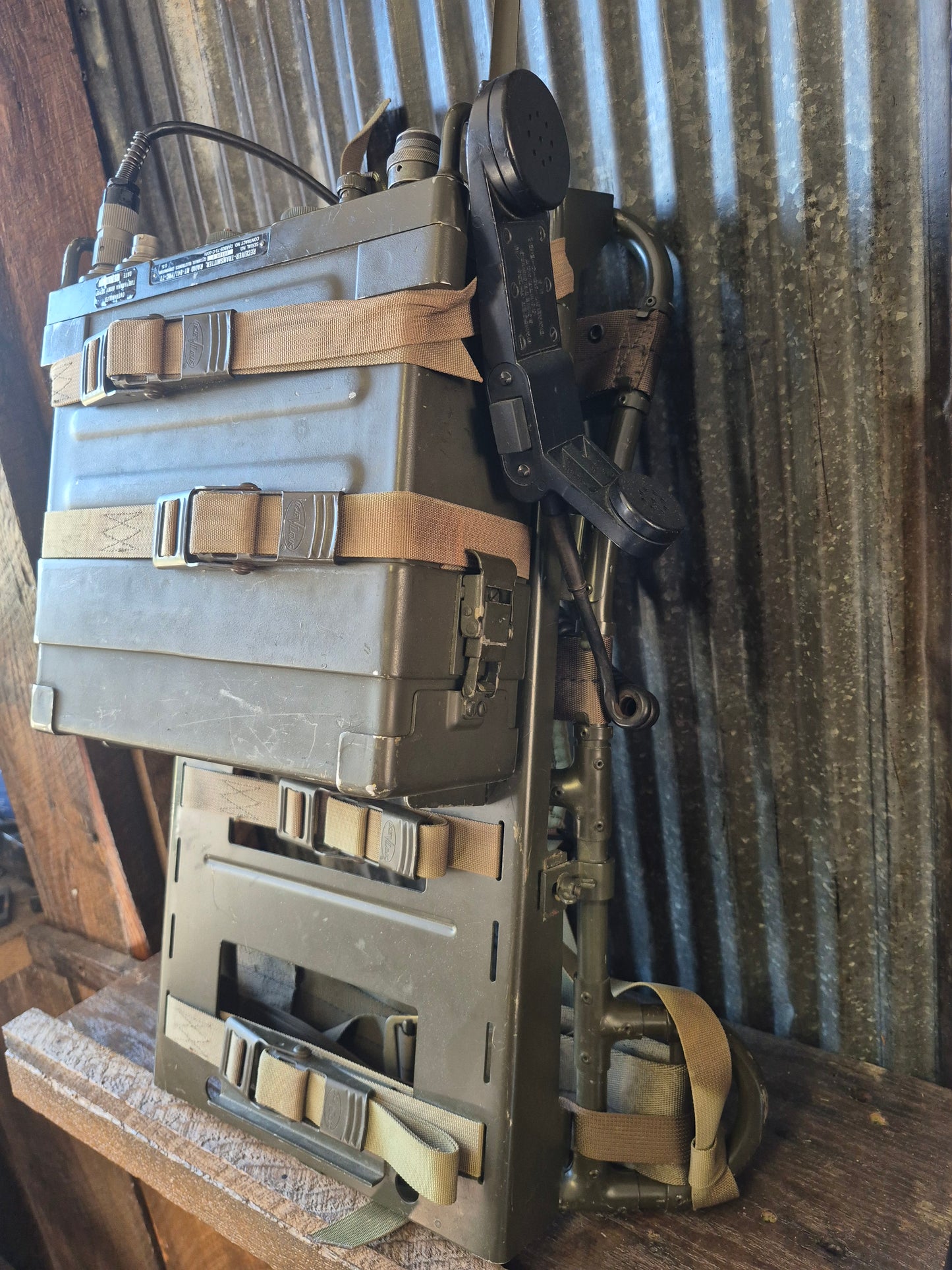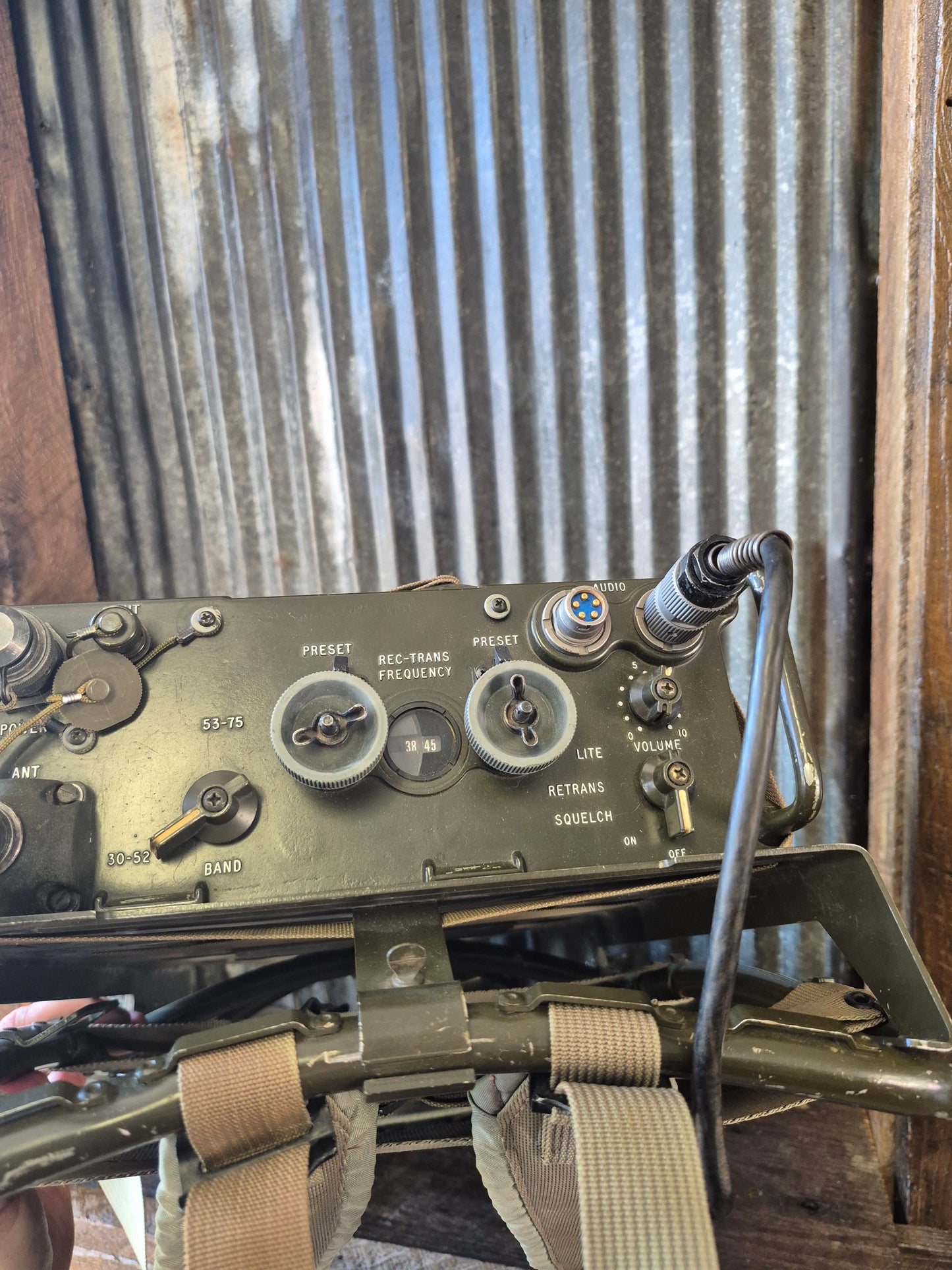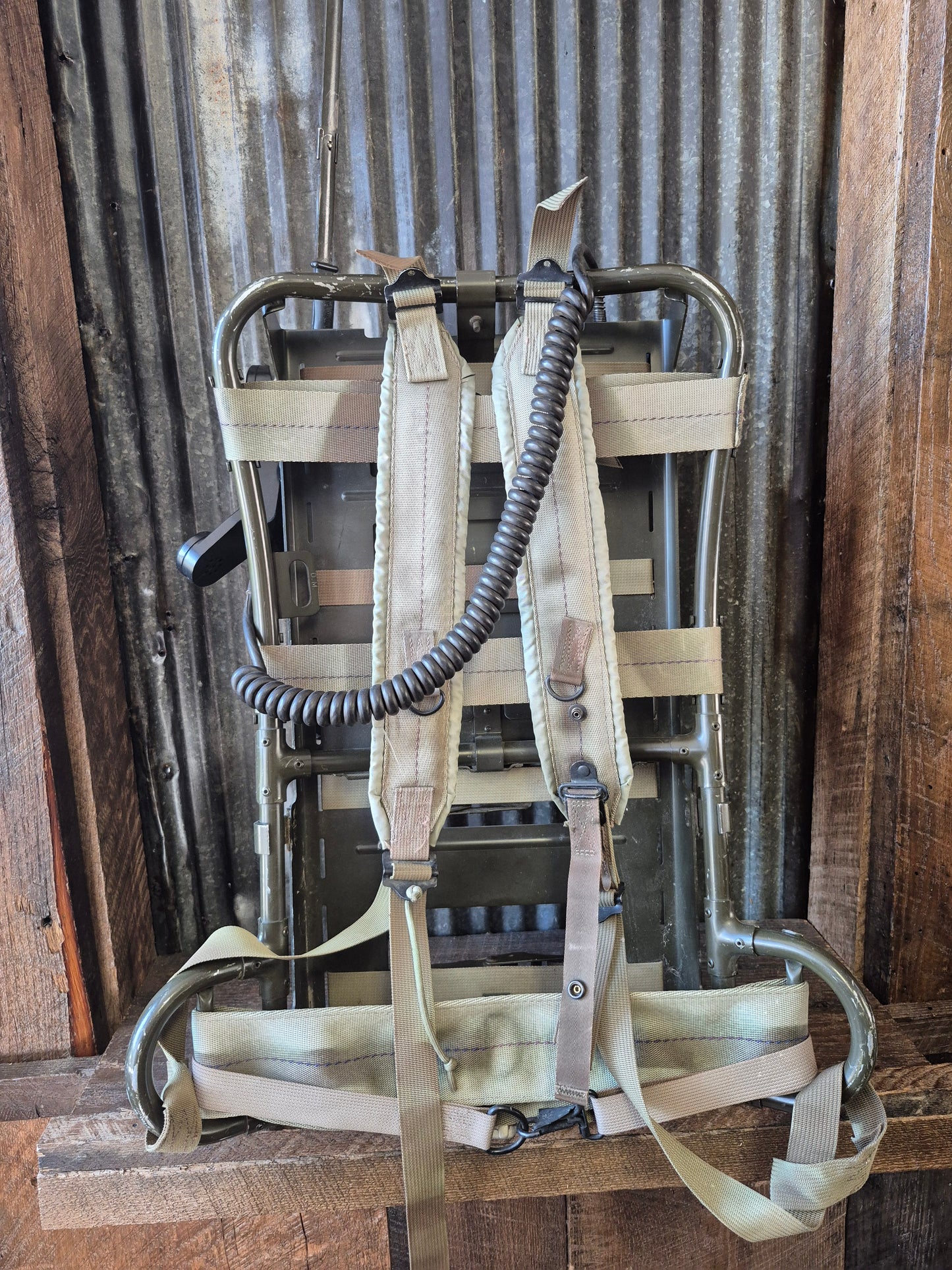Whiskey Rebellion Antiques
RT-841/PRC-77
RT-841/PRC-77
Brief History of the RT-841/PRC-77
The RT-841 is the core VHF (Very High Frequency) FM transceiver component of the AN/PRC-77 manpack radio system, a portable battlefield communication device developed for the U.S. military in the late 1960s. Introduced around 1968–1971 as an upgrade to the earlier AN/PRC-25, it eliminated the vacuum tube in the final power amplifier stage by using transistors, improving reliability and power efficiency while running on a 15V battery.
Manufactured primarily by companies like E-Systems Inc. and Associated Industries, the PRC-77 system (including the RT-841 transceiver, antennas like the AT-271A whip, and accessories) weighed about 13.5 pounds without the battery and operated in the 30–76 MHz range for short-range voice communications up to several kilometers. It also supported secure voice encryption via devices like the TSEC/KY-57 VINSON, a key feature for Vietnam War operations, though early compatibility issues arose with systems like NESTOR.
The radio saw extensive use by the U.S. Army and Marine Corps starting in the Vietnam War (late 1960s–1970s), where it became a staple for infantry squads and vehicular adaptation. It continued in service through the Cold War, Falklands War (via Argentine forces), and into the 1980s–1990s for training and legacy roles, even interoperating with newer systems like SINCGARS in non-frequency-hopping modes. Some non-U.S. variants, like the German Telemit-built PRC-77/GY, incorporated updated synthesizers and were exported to NATO allies.
By the 1990s, it was largely phased out in favor of the SINCGARS (AN/PRC-119) for its frequency-hopping capabilities, though limited use persists today in training (e.g., Austrian Army cadets) and among collectors.
Couldn't load pickup availability
